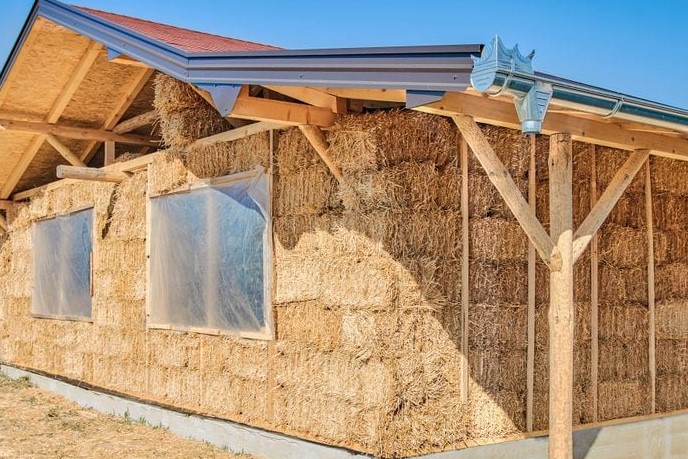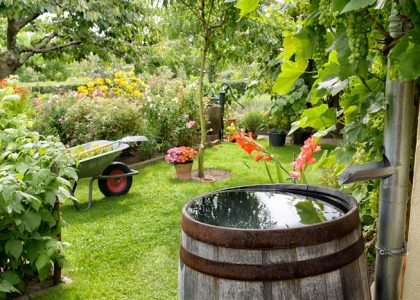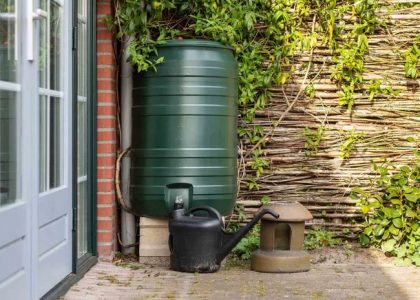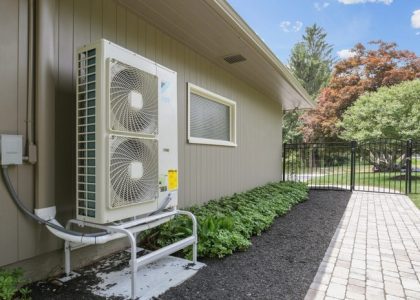
Concrete has long been a staple in the construction industry due to its durability, affordability, and versatility. However, the environmental impact of traditional concrete is significant, contributing to global carbon emissions and depleting natural resources. In response to the growing demand for sustainability, many builders and homeowners are turning to eco-friendly concrete alternatives that offer a more sustainable approach to construction without compromising on quality or performance. These alternatives not only reduce the environmental footprint of building projects but also present new opportunities for innovation in home design and construction.
The Environmental Impact of Traditional Concrete
Concrete is the most widely used construction material in the world, accounting for around 8% of global carbon dioxide emissions. This is mainly due to the production process, which involves heating limestone and other minerals in a kiln to produce clinker, a key ingredient in cement. The kiln’s energy requirements and the chemical reactions that occur release significant amounts of CO2 into the atmosphere. Additionally, concrete is made from raw materials such as sand and gravel, which are often mined in ways that lead to environmental degradation, habitat destruction, and water contamination.
While concrete’s advantages are undeniable, its environmental costs have led to the exploration of eco-friendly concrete alternatives that aim to mitigate these negative effects. These alternatives are not only designed to lower the carbon footprint but also provide long-term benefits in terms of sustainability, energy efficiency, and overall environmental impact.
Sustainable Materials for Eco-Friendly Concrete Alternatives
1. Hempcrete: A Carbon-Negative Material
Hempcrete, a concrete alternative made from hemp fibers, lime, and water, is gaining popularity for its sustainability and unique properties. Unlike traditional concrete, hempcrete is carbon-negative, meaning it absorbs more CO2 than is emitted during its production. The hemp plant, known for its fast growth and low environmental impact, absorbs carbon dioxide from the atmosphere as it grows. When turned into hempcrete, the material continues to lock in this carbon, contributing to the reduction of greenhouse gases.
In addition to its carbon benefits, hempcrete is highly insulating, making it an excellent choice for energy-efficient homes. It helps maintain stable indoor temperatures, reducing the need for heating and cooling, which further lowers a home’s carbon footprint. Hempcrete is also non-toxic, breathable, and resistant to pests, mold, and fire, making it a sustainable and practical building material for eco-conscious homeowners.
2. Recycled Concrete Aggregate (RCA)
Recycled Concrete Aggregate (RCA) is another innovative solution that can replace traditional concrete. RCA is made by crushing and reusing discarded concrete from demolition projects. This helps reduce the demand for new raw materials such as sand, gravel, and limestone, while also diverting waste from landfills.
Using RCA not only conserves natural resources but also reduces energy consumption associated with the extraction, processing, and transportation of new materials. The production of recycled concrete also typically involves lower emissions compared to traditional concrete. As an added benefit, RCA can be used in various forms of construction, including foundations, pavements, and even structural elements of buildings, making it a versatile and sustainable alternative.
3. Geopolymer Concrete
Geopolymer concrete is a revolutionary alternative to traditional cement-based concrete, made from industrial by-products such as fly ash, slag, and metakaolin. Unlike conventional concrete, geopolymer concrete does not rely on limestone as a key ingredient and therefore generates significantly less CO2 during production.
Geopolymer concrete also offers impressive durability and strength, with the potential to outperform traditional concrete in certain applications. It is resistant to heat, chemicals, and water, making it ideal for harsh environmental conditions. Additionally, the production of geopolymer concrete uses a fraction of the energy required to manufacture traditional concrete, making it one of the most energy-efficient and eco-friendly building materials available.
Benefits of Using Eco-Friendly Concrete Alternatives
Using eco-friendly concrete alternatives brings numerous advantages to both builders and homeowners. Not only do these materials contribute to environmental conservation, but they also offer long-term economic and structural benefits.
- Reduction in Carbon Footprint: The primary benefit of eco-friendly concrete alternatives is their reduced environmental impact. Materials like hempcrete and geopolymer concrete significantly lower carbon emissions compared to traditional concrete, helping to mitigate climate change.
- Energy Efficiency: Many of these materials offer superior insulation properties. Hempcrete, for instance, helps maintain a comfortable indoor temperature, reducing the need for artificial heating and cooling. This leads to long-term energy savings and a lower overall environmental footprint.
- Waste Reduction: Alternatives such as RCA and recycled aggregates contribute to waste reduction by reusing materials that would otherwise end up in landfills. This circular approach helps close the loop on construction waste, promoting a more sustainable construction cycle.
- Health and Safety: Many eco-friendly concrete alternatives are non-toxic and contribute to healthier indoor air quality. Materials like hempcrete and geopolymer concrete do not release harmful chemicals into the environment, making them safer for both construction workers and homeowners.
In conclusion, eco-friendly concrete alternatives offer an innovative and sustainable solution for homeowners and builders looking to reduce their environmental impact. From hempcrete’s carbon-negative properties to the versatility of recycled concrete aggregates and the energy efficiency of geopolymer concrete, these alternatives pave the way for a more sustainable and eco-conscious construction industry. As the demand for green building materials continues to grow, it is essential for the construction sector to embrace these alternatives, helping to create homes that are not only durable and functional but also environmentally responsible. By adopting these eco-friendly solutions, we can build a more sustainable future while still meeting the needs of modern construction.




